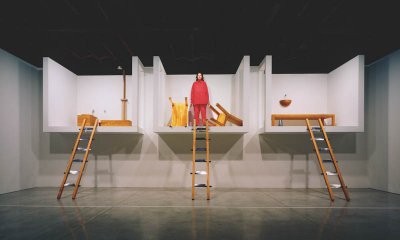From 21 September 2018 to 20 January 2019 Palazzo Strozzi is hosting Italy’s first ever major retrospective devoted to Marina Abramović, one of the most celebrated and controversial figures on the contemporary art scene, a woman who with her works has revolutionised the very idea of performance art, putting her body to the test to probe her outer limits and her potential for expression.
The event takes the shape of a mesmerising retrospective bringing together some 100 artworks by the artist, offering visitors an overview of the most celebrated works in her career stretching from the 1960s to the 2000s with videos, photographs, paintings, objects, installations and the live re-performance of her celebrated performances by a group of performers specifically selected and trained for the show.
Click Here To View The Re-Performance Schedule
The exhibition is the result of direct cooperation with the artist and – coming as it does after Ai Weiwei and Bill Viola – is part of an ongoing drive to continue the series of exhibitions that have brought the greatest exponents of contemporary art to show their work in Florence. The palazzo will once again be used as a single exhibition space, thus allowing Marina Abramović for the very first time to take her measure of Renaissance architecture, underscoring the close tie that the artist has always enjoyed, and indeed continues to enjoy, with Italy.
The exhibition reviews the main phases in the artist’s career, a career on which she embarked as a figurative and then abstract painter in Belgrade when still very young. It was in the 1970s that she began to work on performances involving the direct use of her own body, exemplified in the exhibition by the Rhythm series (1973–4), the famous Art Must Be Beautiful/Artist Must Be Beatiful (1975) performance and The Freeing Series (Memory, Voice, Body, 1975).
In 1975 she met the German artist Ulay with whom she established a human and professional partnership symbolised by the Citroën van in which the two lived – the van is on display in the courtyard of Palazzo Strozzi – and by such celebrated dual performances as Imponderabilia (1977), where the audience was forced to pass between the naked bodies of two artists as though they were the uprights of a doorframe, or The Lovers (1988) with which they marked the end of their relationship, meeting midway along the Great Wall of China in order to take their leave of one another.
The tragedy of the war in Bosnia in the 1990s provided the inspiration for Balkan Baroque (1997), which earned Abramović the Leone d’Oro at the Venice Biennale. The exhibition also showcases such works associated with the Balkan world and with the artist’s own complex family dynamic as The Hero (2001) dedicated to her father, a Resistance hero, and the controversial Balkan Erotic Epic (2005) cycle. In parallel, Abramović also pursued her research into the themes of meditation and transcendence, which she expressed in Transitory Objects (1995–2015): tools for interior journeys, made of materials such as quartz or obsidian.
As the years went by, her works began to extend in time: a full-blown manifesto was The Artist is Present (2010), staged at the MoMA in New York, in which, for more than 700 hours over a three-month period, she stared silently and without moving at 1,675 people who sat opposite her, focusing on the value of energy-based and spiritual communication between the artist and her audience.
The exhibition is organised by the Fondazione Palazzo Strozzi and produced by Moderna Museet, Stockholm in conjunction with the Louisiana Museum of Modern Art, Humlebæk and the Bundeskunsthalle, Bonn. Curated by Arturo Galansino, Fondazione Palazzo Strozzi, and Lena Essling, Moderna Museet, with Tine Colstrup, Louisiana Museum of Modern Art, and Susanne Kleine, Bundeskunsthalle Bonn.







